We can do anything we want to do, if we stick to it long enough.
A bullet journal is written in a specific way known as Rapid Logging. This way/language is separated into topics, page numbers, and bullets.
Topics and Page Numbers:
The first step to Rapid Logging is to add a topic at the top corner of every page. Topics need to be clear and informative, giving you an idea of what the page is about. As you start filling your bullet journal, you should get into the habit of numbering and titling every page.
Bullets:
When making todo lists or noting down tasks and events in your BuJo, it is recommended to use bullets. Bullets are of different types, such as the following:
• ➜ Task
X ➜ Task completed
/ ➜ Task in progress
> ➜ Task migrated
< ➜ Task scheduled
◯ ➜ Event
– ➜ Note
Bullets can also be further divided into signifiers, such as:
* ➜ Priority/Important
! ➜ Inspiration/Ideas
👁 ➜ Explore/Inspect
The best way to keep all these bullets and signifiers in mind is to create a Key Page at the beginning of your bullet journal. Your key can include various other things as well, such as colour codes etc. Here is an example, source Kat:
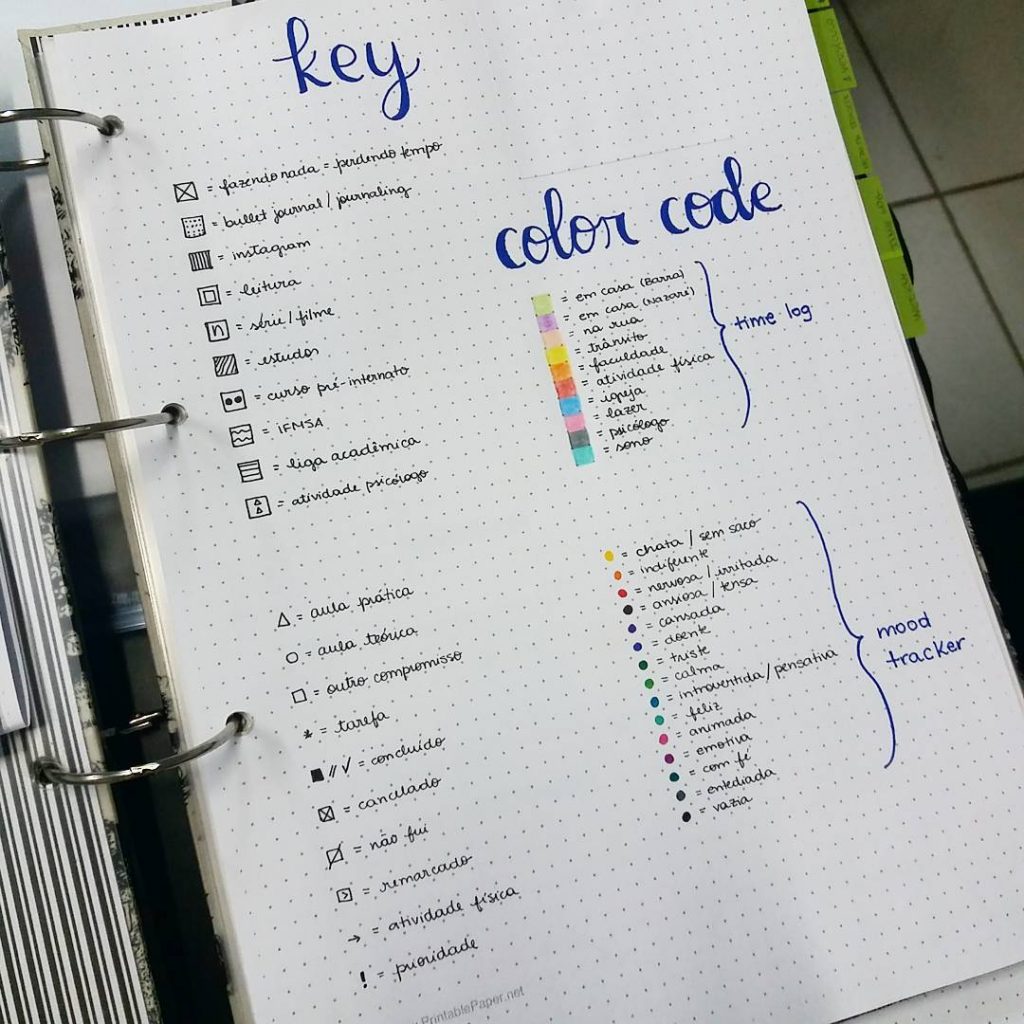
Now that you’ve got yourself familiar with the bullet journal system (Rapid Logging), let’s move on to the framework. The bullet journal framework consists of five core modules: Index, Future Log, Monthly Log, Weekly Log and Daily Log.
Index:
The first few pages of your bullet journal should be dedicated to an index. As you move along in your journal and begin adding different topics and pages, make sure to add them to your index as well. You can write them down like this: “Topic name: 5-10” etc.
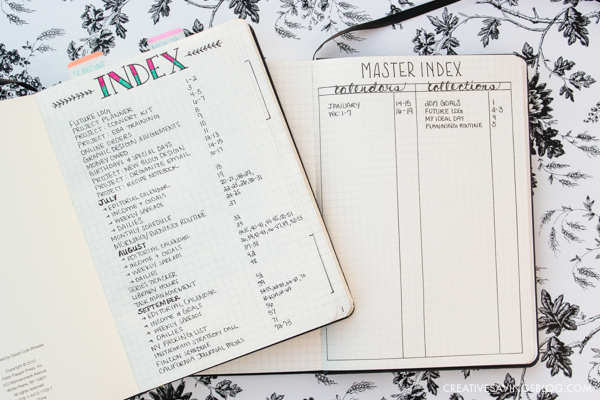
Future Log:
A future log helps you to look at your year and plan events, meetings, and more in advance. It’s an efficient way of organizing your year and keeping in mind important days, such as birthdays and anniversaries.
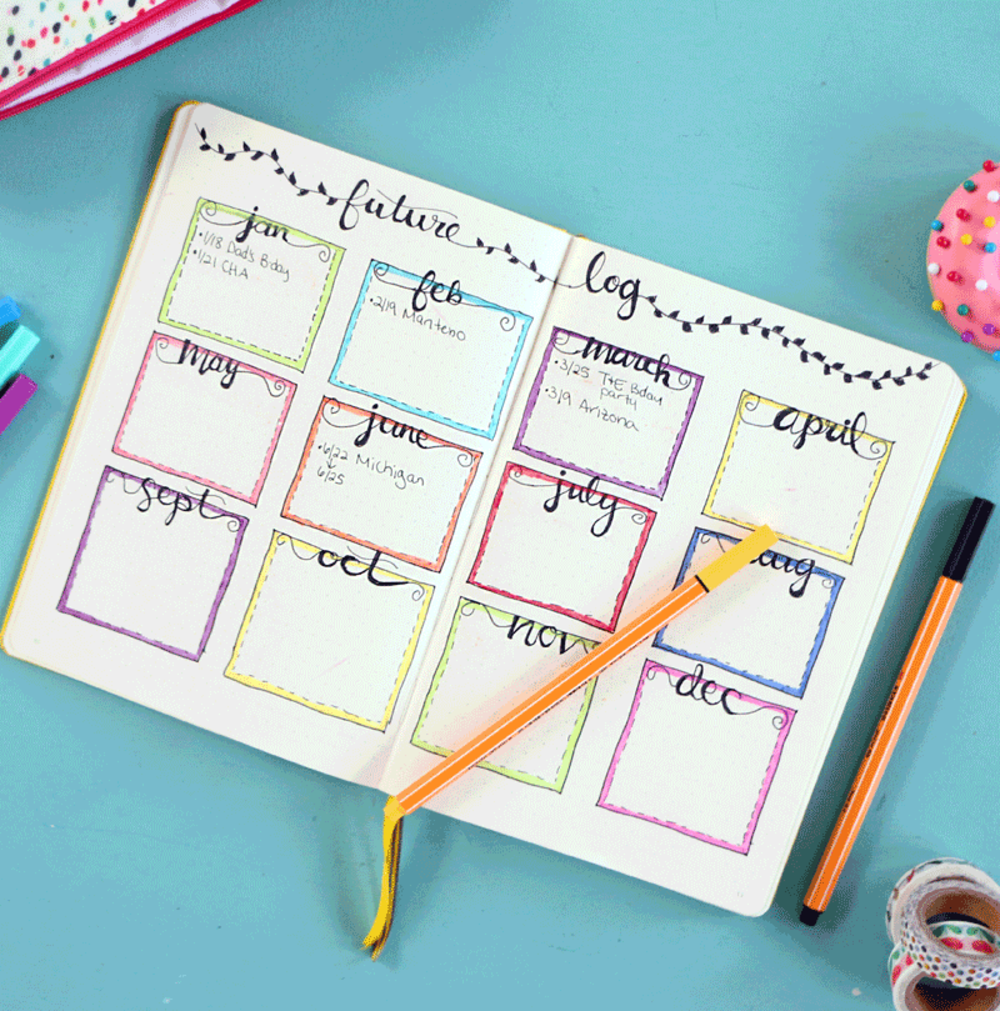
Monthly Log:
A monthly log helps you organize your month, most obviously. It usually consists of a calendar page and a tasks list. The calendar page is where you can schedule events, or record those that passed by already. In the tasks list, you note down all the things you have or need to do by the end of this month. Don’t get too overwhelmed by the rules and formats, it’s totally up to you to customize your monthly log and make it the way you want. Here is an example:
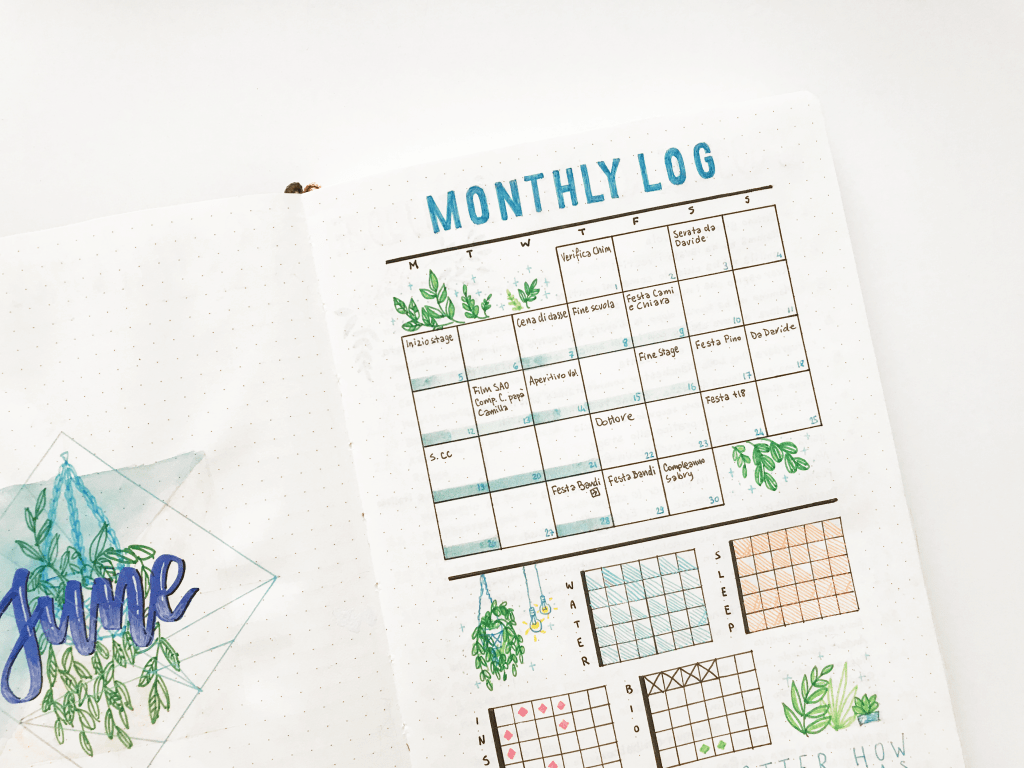
Weekly Log:
A weekly log gives you a birdseye view of the upcoming week and enables you to organize it as well as keep a track of events and recent happenings. Weekly logs can consist of many things (just like monthly logs) for example: food trackers, fitness logs, reminders and so on. Here’s a picture to clear your doubts:
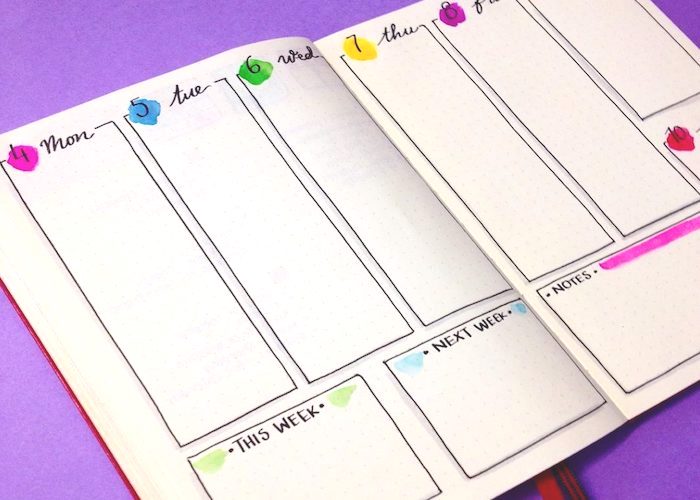
Daily Log:
A daily log is specially designed for day-to-day use. Throughout the day, add notes, reminders, tasks, and highlights in order to fill up your page. Never make a daily log way ahead of time, because you never know how much space you’ll need. Don’t forget to be creative and add little embellishments and illustrations, as seen in the following:
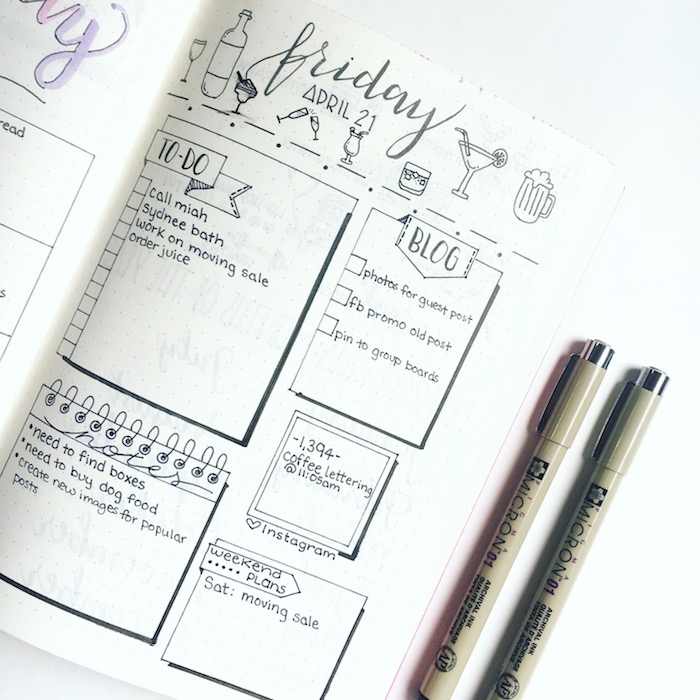
Click here to download and print your very own copy of The Ultimate Guide to Bullet Journaling.
Click here to subscribe!
